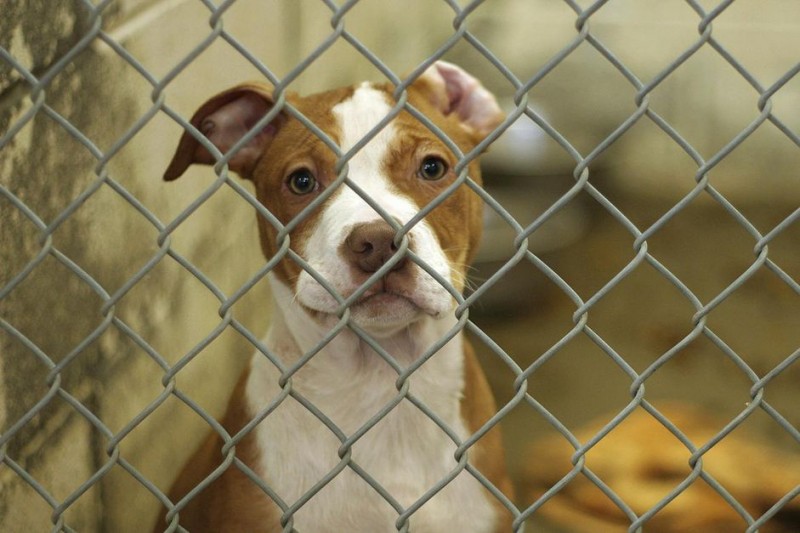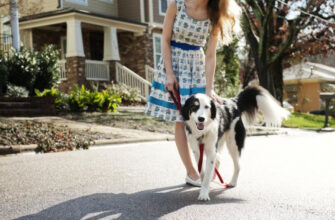If you just adopted a dog from a shelter, rescue group, or other organization, congratulations! Dogs adopted from a dog shelter or animal rescue can make wonderful pets. No matter the reason they landed in the shelter, with a little time, patience, and training, shelter dogs can become happy, well-adjusted family members.
Training a rescue dog will be a top priority. Your newly adopted dog may have some level of obedience training already, or it may not have any. It’s also possible that something in its past will trigger behavioral issues. That’s why it’s important that you take the time to train and socialize your newly adopted companion.
Expect a Period of Adjustment
When you adopt a puppy or dog from a shelter, it comes with a history. Keep in mind that the stress of being relinquished to a shelter along with whatever else the dog has experienced in its past can make it a less than confident pup in its new surroundings.
Plan on giving your pet some time to adjust to its new home and family while you are learning how to train a rescue dog. Dogs can take anywhere from a few hours to several months to get used to living in a new place. During this adjustment time, do what you can to make your new dog feel safe and comfortable. Be patient while it adjusts, but also try to keep things consistent and predictable in the new environment.
Set Boundaries
Remember that training begins from the day your new dog comes home. It can be tempting to coddle it for the first week or so to try to make up for the time spent in the shelter. Don’t do it!
If you allow your shelter dog to engage in certain behaviors when you first bring it home, you will find it to be much harder to train it to stop doing those things later. This includes some of the most obvious things such as getting up on the sofa, eliminating on the carpet, or chewing on table legs. Establish your dog’s boundaries early and be sure the entire family knows and enforces them.
Get on a Schedule
Dogs like having a routine. A dog who has spent the last few weeks or more in a shelter may have been stressed out in part because its life had become so unpredictable. By establishing a routine for feeding, walking, playtime, and bedtime, you can begin providing some stability for your dog. In most cases, this will significantly help the dog get adjusted to its new home.
Assume It Has No Training
Treat your shelter dog the same way you would a new puppy coming into your house. Assume that it has never had any training. Even if the dog had obedience training in the past, it may need a refresher after all that it has been through.
Your best bet is to expect that your dog knows nothing. This way you’ll be pleasantly surprised if the dog already knows some basic commands or is already housebroken. However, you won’t be setting the pup up for failure with expectations that are too high.
Be sure to train your new dog using positive reinforcement. Keep training sessions upbeat and low-stress.
Plan on Crate Training
Just as you would with a new puppy, you should introduce your shelter dog to crate training as soon as possible. In this way, you can work on housebreaking and be comfortable that the dog won’t get into mischief when left unsupervised.
A crate is also helpful because it gives your shelter dog a place of its own. Between living in a shelter and now coming to a new home, your dog may feel extremely stressed. Having a place to retreat to when it feels overwhelmed can go a long way in helping the dog settle in.
Enroll in Obedience Class
Even though it may take a little while for your shelter dog to get used to its new home, that doesn’t mean you should put off attending an obedience program. On the contrary, regular training sessions can help get dogs into a routine.
Starting a training program can also help you to establish boundaries for your dog right from the beginning. An obedience class sets the dog up for good behavior and makes it easier for it to become a happy and healthy member of your family. Remember, dogs are most at ease when they know the rules. Dogs crave structure and predictability, so training your new dog properly from the start is one of the best things you can do for your new pet.
Problems and Proofing Behavior
You may encounter a few behavioral snags with a rescue dog. Here are the most common issues you and your dog may experience while settling in:
- Bonding: Though training should begin immediately, you also want to take it at a pace that your dog is comfortable with. Some dogs may not be ready for a formal obedience class right away and you may find it better to work on bonding with your dog at home for the first few weeks. You can still employ basic training techniques without the help of a professional trainer.
- Socialization: It’s critical to socialize your dog but it may be another challenge with rescue dogs. Just like training, it’s important that you get your dog used to environments, people, and other animals it may encounter in its new life with you. This should also be taken slowly and within your dog’s comfort level as well.
- Crating: A crate may be difficult for your dog, particularly if its previous owner used it as a place of punishment or if it spent too much time in one. Turn your crate training into a positive experience and don’t force the dog in at first if it’s reluctant.
- Supervision: While the dog is adjusting to its new home, be sure to supervise it at all times, especially when outside. Even if you have a fenced-in yard, the dog may become curious about or startled by noises, sights, and smells outside the boundary. If it does get loose, your dog will have a hard time finding its way back to the new home because it is unfamiliar with the territory.
Common Mistakes
Some of the most common mistakes new owners make with rescue dogs are related to assuming too much (or too little) about the dog’s past. Not every dog in a shelter had a traumatic past and, on the flip side, not all of them were properly trained or socialized. In every aspect of your dog’s care, take the approach that it is a blank slate waiting for your direction, training, and love.
Asking about the dog’s history before adopting can help, but this information should still be taken with a grain of salt. After all, the shelter workers may only have limited information about its past and it’s likely their only interaction with the dog was in the shelter environment, which is completely different than a home. Start from scratch and you’ll build a better relationship with your pup!












